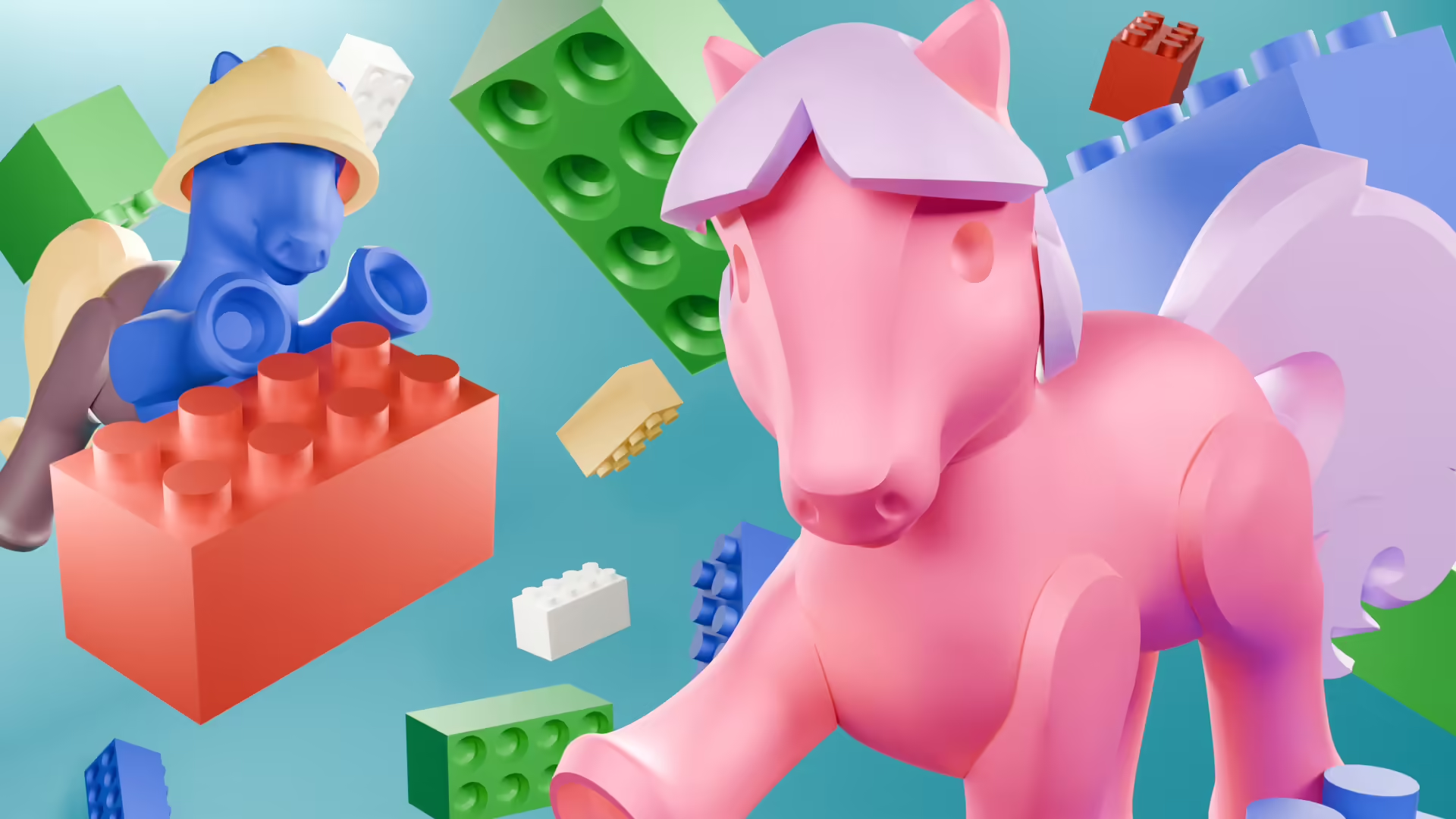F'Deem is fully open source and remixable, so customize it to your liking! You can also download pieces off of Printables. A full introduction video is also available here! Donate if you want more F'Deem!
Created by The 64th Gamer on August 2nd, 2024.
Want to discuss F'Deem? Check the forum!

F.A.Q.
What are good print settings?
Printing these parts can be tricky without proper tuning, but with the right settings, you’ll get reliable results. Note that F'Deem is tested entirely around PLA and used on a Prusa Core ONE with barely tweaked standard print profiles, other processes may vary greatly.
-
Infill Percentage:
The clutch strength of parts (especially connection points) directly depends on infill and the amount of perimeters. A higher infill can improve grip — but only up to a point. Experiment to find the sweet spot for your printer. -
Orientation:
Studs should always be printed upright for best strength and dimensional accuracy. Printing them at an angle may result in weak or ill-fitting features. Pegs and sockets can be printed on their side without affecting usability. -
Layer Height:
- Use
0.1 mmor smaller for detailed or studded parts. - Use
0.2 mmfor standard bricks without fine details.
- Use
-
Supports & Brims:
Some parts may require reorientation, supports, or brims depending on your printer's tolerances. Test and tweak as needed. The small size of the parts makes iteration quick. -
Bed Adhesion:
Apply glue stick to your print bed to prevent lifting. Even small parts can warp or detach during printing if adhesion is weak. -
Material Tips:
- Avoid using matte PLA for functional pieces, its surface grain can make clutch fits too tight and hinder rotation.
- Use silk PLA sparingly, its brittleness makes it a poor choice for small, fragile parts like accessories or detailed figures.
What's F'Deem supposed to mean?
Funny Derivative Elements for Equestrian Makers, but also based of the 'FDM' type of 3D printing. Fun fact this was originally going to be called 'Oh Funny Horse', which had a full logo and everything.What's the Roadmap?
Mostly making very common pieces for general use: foods, nature, tools, etc. Eventually axle and gear pieces will be introduced too. Until more people discover F'Deem and ask for certain stuff I'll mainly be going off what I think would be a neat piece.Can this piece be made?
You are free to submit piece ideas in the forum, though there is no garuntee I will plan to make it. I am open to commissions if you want pieces modeled, either standardized and able to be incorperated into the public catalog, or 'non-canon' variants for specialized designs or ones that fall out of F'Deem's core design language (like a pony that frowns).What's the Design Philosophy?
Pieces are built from scratch, designed to be mostly solid for strength. All of the base bricks are designed to print without supports, though figures and special pieces may require them. Bricks are at 1.5x the usual scale of other building systems for easier tolerances, strength, and to mimic the relative size of how bricks were when kids played with them.Pieces are designed to be printed in 1 color, letting it be easily be made on any printer. Instead of going for stickers, F'Deem bricks have thick walls that allow them to be etched and debossed in the modeling software to form specific designs.
Everything is designed to just be 3D printed, which includes packaging. The "8x12x3 Packaging Piece" combines with the "8x12 Plates" to form a box, completely compatible with the F'Deem system for you to store pieces in. The package piece also is designed to connect to other packages for bigger sets. On top of that, the studs on the top and bottom mean the package itself is what you build your set on top of! This means you can easily tear down your set and keep everything in the original box, bring it somewhere else, and build something different! There are also specific "8x12 Plates" with artwork and information on the bottom, which can be used as a proper boxart to display your set with! It's a very tightly designed system I spent way too many weeks creating.
In terms of designing pieces, there are a few short rules: Ponies faces can't deviate from the standard smile or general shape- they need to still fit most hair pieces. 'Tiles' and other fully flat pieces cannot be done unless they are very niche or use debossed faces to prevent them from allowing users to smooth their builds. Organic shapes should all have defined sharp edges that mark the most important details and outlines of a shape. Debossed elements should only go in 1mm deep, and nothing should be embossed. Objects that normally only look right with multiple colors should be avoided. If this limitation can be avoided by combining two separately colored pieces (see: the banana piece + brown double-sided peg), both need to still be able to stand on their own and be useful. Pony hair and hats should not wrap around the cheeks or chin as this can prevent putting on the piece when printed. All non-ponies have to have a weird sound-alike name.
There are some looser rules on the design pertaining to what pieces can be made. As of now I've restricted myself from creating pegusi and unicorns to focus on just ponies, but these will eventually be made. Additonally technological pieces are restricted in favor of more primitive items, such as 'wooden' wheels and basic tools. In the future this may extend to more mechanical devices such as a phonograph or a flare gun. More meta items break this such as the filament spool piece and the 2x4 promo brick with a website url, but those fall only within that category.
